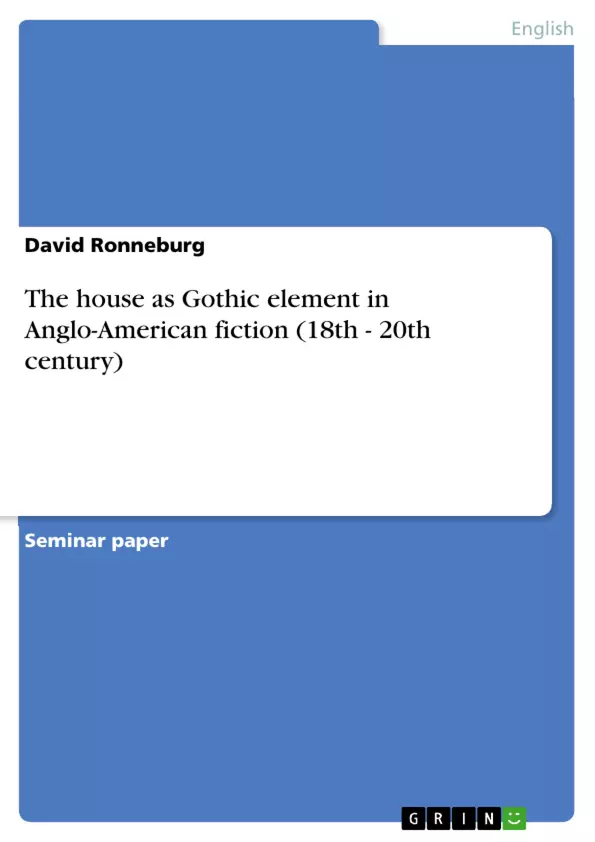Diese in englischer Sprache verfasste Arbeit beschäftigt sich mit verschiedenen Erscheinungsformen und Funktionen, in denen das "Haus-Motiv" als "gothic element" in der Angloamerikanischen Literatur auftritt. Zu diesem Zweck werden zahlreiche Prosatexte von Autoren wie F.H. Burnett, A.C. Doyle, B. Stoker, C. Brontë, C. Dickens, D. du Maurier, O. Wilde, J.K. Rowling, N. Hawthorne, M. Twain, W. Faulkner und C.P. Gilman auf das Haus-Motiv hin untersucht, analysiert und im Gothic-Kontext interpretiert.
Table of Contents
- Introduction
- Gothic Fiction
- Definition
- Roots, Developments, Impact
- Britain
- USA
- The House - 'Commonplace' in Gothic Fiction
- Aspects of the Gothic House
- Building and Family Line
- Looking-Glass House or (Gateway to) the Other World
- The House of Bluebeard
- The House as a Tomb
- Culture Clashes and the House
- Conclusion
Objectives and Key Themes
This paper explores the significance of the house as a Gothic element in Anglo-American fiction, using a selection of texts from the 18th to the 20th century. The study focuses on the house as a recurring motif and symbol in gothic literature, examining its various functions and interactions with the characters and their psychological states.
- The house as a representation of the family line and its history
- The house as a liminal space, blurring the boundaries between reality and the supernatural
- The house as a site of confinement, secrecy, and hidden dangers
- The house as a reflection of societal anxieties and cultural clashes
- The house as a symbol of decay, death, and the inevitability of decline
Chapter Summaries
- Introduction: This chapter introduces the main theme of the paper, exploring the house as a Gothic element in Anglo-American fiction and its significance as a setting, symbol, and semi-character.
- Gothic Fiction: This chapter defines the term "Gothic," examining its varied historical and literary interpretations. It traces the roots and development of the Gothic genre in Britain and the USA, highlighting key authors and their contributions to the evolution of the genre.
- Aspects of the Gothic House: This chapter delves into the multifaceted role of the house in Gothic fiction, examining its use as a representation of the family line, a gateway to the supernatural, a space of confinement, and a site for cultural clashes.
Keywords
Key terms and concepts explored in this paper include: Gothic fiction, the house as a Gothic element, Anglo-American literature, family lineage, the supernatural, liminality, confinement, culture clashes, decay, and death.
- Quote paper
- David Ronneburg (Author), 2002, The house as Gothic element in Anglo-American fiction (18th - 20th century), Munich, GRIN Verlag, https://www.grin.com/document/45509




